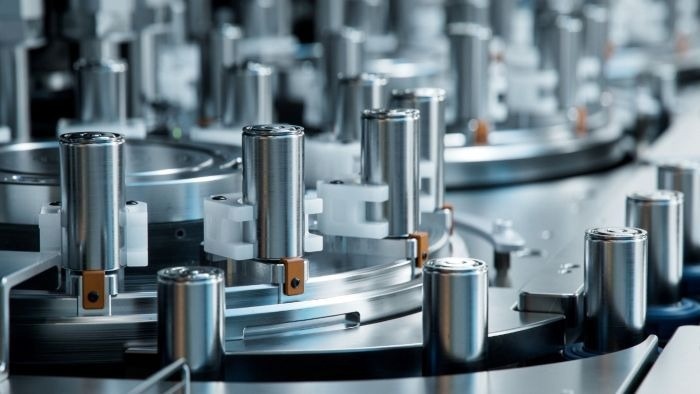As lithium-ion battery manufacturers seek to scale up while maintaining quality, they are turning to increasingly sophisticated tools to optimize production. In this interview, experts from Thermo Fisher Scientific explore how rheology and inline mass profilometry can help manufacturers improve the consistency and quality of battery electrode coatings.
AZoMaterials caught up with Dr. Annika Volp, Process Application Specialist, and Alon Vaisman, Senior Manager of Strategic Business Development, to discuss this topic in more detail.
Annika, let’s start with the basics. What is rotational rheology, and why is it important for battery slurry formulation?
Dr. Annika Volp: Rotational rheology is the study of how materials flow and deform under stress. For battery slurries, it's particularly important because these materials need to behave in very specific ways during storage and during the coating process. By understanding viscosity, yield stress, and viscoelasticity, we can optimize formulations for improved stability, uniformity, and ultimately, battery performance.

Image Credit: IM Imagery/Shutterstock.com
You mentioned that slurries typically exhibit shear-thinning behavior. How does this influence the coating process?
Dr. Annika Volp: Shear-thinning means that the viscosity of the slurry decreases as shear increases—ideal for battery coatings. At rest, the high viscosity prevents sedimentation of active materials, while during coating, lower viscosity ensures smooth, uniform application. Measuring this behavior across a wide range of shear rates provides insight into how the slurry will perform both in storage and during manufacturing.
Can rheometers also provide insights beyond viscosity?
Dr. Annika Volp: Absolutely. Yield stress measurements can indicate a slurry’s resistance to flow, which correlates with shelf stability and spreading behavior. We can also evaluate thixotropy, which reflects how quickly a slurry recovers its structure after being sheared. This is crucial for preventing slurries from spreading too much or too little after coating.
How can rheology support dry electrode processing?
Dr. Annika Volp: Rheometers can be used in oscillation mode to assess the viscoelastic properties of dry-processed electrode films. For example, we can characterize the strength and cohesion of PTFE fibril networks, which are critical in dry electrode integrity and manufacturability. Understanding these properties helps optimize mixing, calendaring, and binder systems.
Ellen, your talk focused on inline mass profilometry. What makes this technology a game-changer for coating quality control?
Alon Vaisman: Inline mass profilometry is a new approach that enables real-time, full-surface measurement of electrode coating mass. Traditional single-point sensors only scan small sections, which can miss non-uniformities, especially along the edges. Our technology captures complete profiles every millisecond, providing a high-resolution, real-time map of coating quality across the full electrode width.
Why is coating uniformity so critical in battery production?
Alon Vaisman: Coating uniformity directly affects the anode-to-cathode ratio, also called the N/P ratio. Imbalances here can lead to capacity fade, safety issues like dendrite formation, or even thermal runaway. By tightly controlling mass loading in real time, manufacturers can reduce scrap, improve safety, and extend battery life.
Can mass profilometry be used to detect defects like streaks or flakes?
Alon Vaisman: Yes, and that’s a key strength. Our system can detect subtle variations in loading, including streaks, dewets, and even tiny material flakes that may not be visible with optical inspection. We’ve demonstrated this using known defects, and the system easily detects mass changes even in the millimeter range.
What’s the benefit of integrating this tool directly into the production line?
Alon Vaisman: Real-time feedback is everything. If coating quality drifts, operators can make immediate adjustments rather than waiting for lab results. It reduces downtime, waste, and the risk of defective batteries reaching assembly. Plus, the data can be logged for traceability and failure analysis.
Together, your presentations made a strong case for combining rheological insight with inline metrology. How do these tools complement each other in battery manufacturing?
Dr. Annika Volp: Rheology helps manufacturers fine-tune the slurry formulation so it has the right flow characteristics for uniform coating. That’s the foundation—if the slurry isn’t right, everything downstream is at risk.
Alon Vaisman: Exactly. But even with a well-formulated slurry, the process can drift over time. Inline metrology continuously monitors the coating process in real time, catching any deviations before they become defects. So rheology sets the conditions for success, and inline metrology ensures those conditions are maintained throughout production.
This is interview five in the eight-piece Building Better Batteries series.
Watch the Accompanying Webinar: Assuring the Quality of Electrode Slurries and Coatings
About the Speakers
Dr. Annika Volp

Dr. Annika Volp is a Process Application Specialist at Thermo Fisher Scientific, where she focuses on rheological solutions for complex industrial formulations. She holds a PhD in physical chemistry and has extensive experience in soft matter characterization.
Alon Vaisman
Alon Vaisman is Senior Manager of Strategic Business Development at Thermo Fisher Scientific. With a background in physics and advanced manufacturing, he leads the development and deployment of inline metrology solutions for battery and energy storage applications.
solutions for battery and energy storage applications.

This information has been sourced, reviewed and adapted from materials provided by Thermo Fisher Scientific.
For more information on this source, please visit thermofisher.com/battery-solutions.
Disclaimer: The views expressed here are those of the interviewee and do not necessarily represent the views of AZoM.com Limited (T/A) AZoNetwork, the owner and operator of this website. This disclaimer forms part of the Terms and Conditions of use of this website.